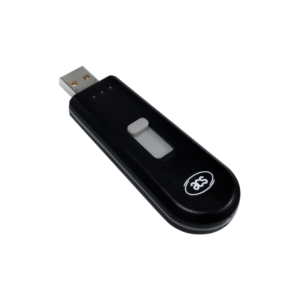Table of Contents
ПереключатьВведение
With the rapid advancement of technology, businesses are persistently on the lookout for solutions that can streamline their operations, enhance efficiency, and significantly improve customer experiences. One such groundbreaking technology is the ACR1251T NFC Contactless Smart Card Reader Writer. This comprehensive guide will provide you with an in-depth understanding of how to effectively integrate this state-of-the-art device into your business operations.

Getting to Know the ACR1251T NFC Contactless Smart Card Reader Writer
Before proceeding with the integration process, it’s essential to understand what the ACR1251T NFC Contactless Smart Card Reader Writer is and what it brings to the table. As the token version of the ACR1251U USB NFC Reader II, the ACR1251T offers advanced capabilities like firmware upgradeability and support for NFC tags and devices. This makes it an ideal fit for a host of contactless applications that require additional security. Whether it’s for personal identity verification, network login, online banking, or micropayment, the ACR1251T is a versatile device that caters to a broad spectrum of business needs.
The Perks of Incorporating the ACR1251T into Your Business
The incorporation of the ACR1251T into your business operations can yield numerous benefits. For starters, it can significantly enhance the user experience by providing a swift and seamless transaction process. This not only expedites operations but also bolsters customer satisfaction. Additionally, it can play a crucial role in strengthening your security measures, thereby minimizing the risk of data breaches and fraud. The ACR1251T’s capability to support unconventional NFC applications, such as smart posters, can serve as a unique platform for advertising, marketing, and communication, thereby giving your business a competitive edge.
Laying the Groundwork for the Integration
Prior to integrating the ACR1251T into your system, it’s pivotal to have a clear understanding of your business needs and objectives. Evaluate how this device can cater to your specific needs and add tangible value to your operations. Ensure that your systems are compatible with the ACR1251T and plan for any necessary upgrades or modifications. Adequate preparation can pave the way for a seamless integration process and help you make the most out of this advanced technology.
Step-by-Step Process to Incorporate the ACR1251T into Your Operations
The first and foremost step towards integration is installing the necessary drivers and software. The device comes with a Software Development Kit (SDK) that is compatible with major operating systems, simplifying the installation process. Once the installation is complete, you can begin setting up the device in alignment with your business requirements. The ACR1251T supports remote post-deployment firmware update, which eliminates the need for additional hardware modification. This feature not only simplifies the integration process but also ensures the device’s longevity and adaptability to future technological enhancements.
Leveraging the ACR1251T for Non-Conventional Applications
While the ACR1251T is primarily designed for contactless smart card applications, its capabilities extend beyond traditional use cases. With its support for non-conventional NFC applications, the device can be used to create smart posters for advertising, marketing, and communication. This can be a game-changer for businesses looking to step up their marketing game and engage with their customers in a whole new way.
Заключение
In conclusion, integrating the ACR1251T NFC Contactless Smart Card Reader Writer into your business operations might entail careful planning and execution, but the myriad benefits it offers in terms of efficiency, security, and customer experience make it a worthwhile investment. By leveraging the power of contactless technology, you can give your business the competitive edge it needs to thrive in today’s digital age. So, embrace this technology today and watch your business grow by leaps and bounds.
